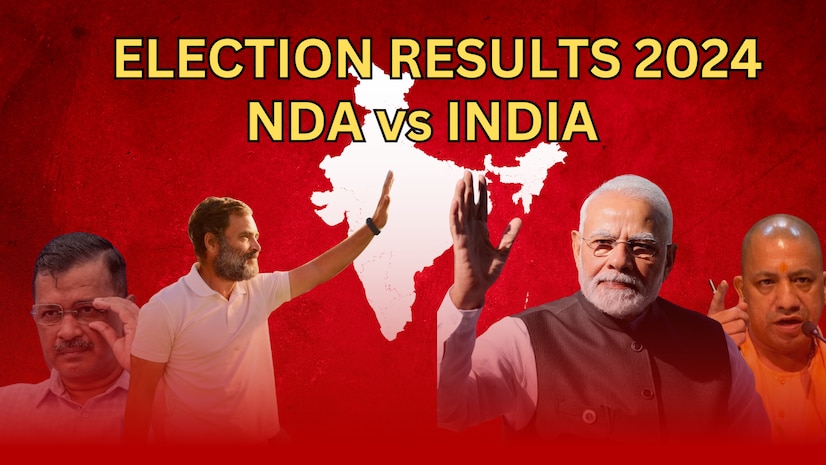The 2024 Lok Sabha elections in India are poised to be one of the most significant political events in the country’s recent history. As the largest democracy in the world, Lok Sabha Elections in India 2024 India will go to the polls in what is expected to be a highly competitive election that will determine the political landscape for the next five years. With nearly 900 million eligible voters, the stakes are high, not just for the political parties contesting the elections, but also for the nation’s future trajectory in terms of economic growth, social development, and global positioning.
The elections will be held to elect members to the lower house of India’s Parliament, known as the Lok Sabha, which consists of 543 elected representatives. The party or coalition that wins a majority in the Lok Sabha forms the government, with the leader of the majority party becoming the Prime Minister. In 2024, the current Bharatiya Janata Party (BJP)-led National Democratic Alliance (NDA) government, headed by Prime Minister Narendra Modi, will seek a third consecutive term in office. Meanwhile, opposition parties, including the Congress-led United Progressive Alliance (UPA), regional parties, and new political alliances, will aim to challenge the BJP’s dominance.
Historical Context and Importance of the 2024 Elections

India’s general elections are held every five years, and the 2024 Lok Sabha Elections in India 2024 elections mark the 18th such exercise since independence in 1947. The Lok Sabha elections have always been a reflection of the country’s diverse political landscape, with national parties, regional forces, and various ideological movements coming together to shape the future of governance.
The 2014 and 2019 elections saw the rise of the BJP as a dominant political force under the leadership of Narendra Modi. In both elections, the BJP won decisive majorities, with the 2019 elections giving the party a clear mandate of 303 seats. This period marked a significant shift in Indian politics, with the BJP promoting a strong nationalistic agenda, implementing key economic reforms, and focusing on social policies like the Swachh Bharat (Clean India) mission, Ayushman Bharat healthcare program, and welfare schemes like Ujjwala (cooking gas) and PM-Kisan (direct cash transfer to farmers).
In contrast, the Congress party, which had ruled India for several decades post-independence, faced significant losses in the last two elections. However, as the principal opposition party, the Congress is looking to make a comeback by forging alliances with regional parties and focusing on issues like unemployment, economic inequality, and social justice.
Key Issues in the 2024 Lok Sabha Elections

As India prepares for the 2024 Lok Sabha elections, several key issues are likely to dominate the political discourse:
- Economic Growth and Development: India’s economy has seen a mix of highs and lows over the past decade. While the Modi government has been credited with implementing reforms like the Goods and Services Tax (GST) and promoting a business-friendly environment, challenges like rising inflation, unemployment, and the post-COVID-19 economic recovery will be critical issues. The opposition is expected to highlight concerns around economic inequality, farmer distress, and the impact of demonetization.
- Unemployment and Job Creation: Unemployment remains a pressing issue, especially for India’s youth. As one of the youngest nations in the world, India’s demographic dividend can only be realized if the government creates Lok Sabha Elections in India 2024 enough jobs to absorb millions of new entrants into the workforce. This issue will likely be a major talking point for both the ruling government and the opposition during the election campaigns.
- Social Welfare and Inequality: Social inequality, particularly in rural areas and among marginalized communities, continues to be a challenge. Issues related to education, healthcare access, and poverty alleviation will be central to political debates. The government’s performance in implementing welfare schemes, such as housing, sanitation, and direct cash transfers, will be closely scrutinized.
- National Security and Foreign Policy: National security has been a cornerstone of the Modi government’s agenda, particularly in relation to neighboring Pakistan and China. Incidents such as the Balakot airstrike and the Galwan Valley clash with Chinese forces have been used by the BJP to project its strong nationalistic credentials. The handling of India’s relations with key global players, including the U.S., Russia, and emerging partners in the Indo-Pacific region, will also influence voter sentiment.
- Religious and Social Polarization: Religion and identity politics have played a significant role in Indian elections, especially in recent years. The BJP has been criticized by some sections for promoting a divisive brand of politics centered on Hindu nationalism. Issues like the Citizenship Amendment Act (CAA), National Register of Citizens (NRC), and cow vigilantism have created deep divides in Indian society. Opposition parties are likely to campaign on promises of secularism and inclusivity.
- Environment and Climate Change: With climate change becoming a global priority, environmental issues such as air pollution, water scarcity, and sustainable development are expected to play a larger role in the 2024 elections than in previous cycles. India’s vulnerability to climate-related disasters, such as floods, droughts, and heatwaves, could push parties to adopt more proactive policies on climate action.
- Agriculture and Farmer Issues: Agriculture remains the backbone of the Indian economy, and the 2020-2021 farmers’ protests against the now-repealed farm laws underscored the importance of rural voters. Issues like Minimum Support Prices (MSP), farm income, and rural development will be critical factors that determine voting patterns, particularly in states like Punjab, Uttar Pradesh, and Haryana.
Political Parties and Alliances to Watch

The 2024 elections are expected to feature a highly competitive race between the BJP-led NDA and the Congress-led UPA, along with several regional and third-front alliances. Key players include:
- Bharatiya Janata Party (BJP): The BJP will campaign on its record of governance, national security, and economic reforms. Prime Minister Narendra Modi remains the face of the party, and his leadership will be a significant factor in Lok Sabha Elections in India 2024 determining the BJP’s electoral success.
- Indian National Congress (INC): The Congress, under the leadership of Rahul Gandhi and other prominent figures like Mallikarjun Kharge, will focus on issues of unemployment, economic slowdown, and social justice. The party will aim to present itself as a viable alternative to the BJP, particularly by forging alliances with regional players.
- Aam Aadmi Party (AAP): After significant victories in Delhi and Punjab, the AAP, led by Arvind Kejriwal, is looking to expand its influence at the national level. AAP’s focus on education, healthcare, and governance reforms could resonate with urban voters.
- Regional Parties: Regional parties like the Trinamool Congress (TMC), led by Mamata Banerjee, Samajwadi Party (SP) in Uttar Pradesh, DMK in Tamil Nadu, and Shiv Sena in Maharashtra will play a crucial role in shaping the outcome of the elections. These parties have strong voter bases in their respective states and could act as kingmakers in a fractured mandate scenario.
- Third-Front and Alliances: There is ongoing speculation about the possibility of a third front, composed of regional parties, emerging as an alternative to both the NDA and UPA. Such an alliance could gain significant traction, particularly if neither of the two major coalitions manages to secure a clear majority.
Conclusion
The 2024 Lok Sabha elections in India will be a defining moment for the country’s democracy. The outcome will not only determine the next government but will also shape India’s domestic and foreign policies in a rapidly changing global context. With critical issues such as economic recovery, social equality, national security, and environmental sustainability on the line, the elections will see intense competition among political parties vying for the support of a diverse electorate. As always, the voter turnout and preferences of India’s vast rural and urban populations will be the ultimate deciding factors in this monumental election.


